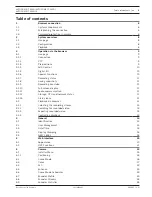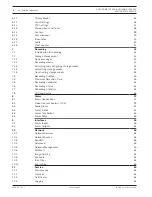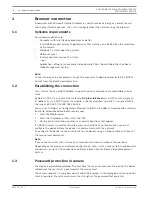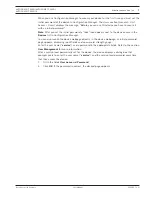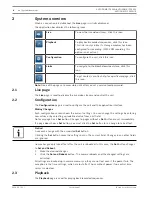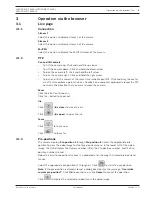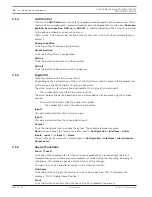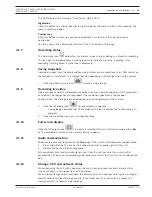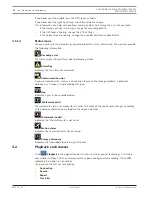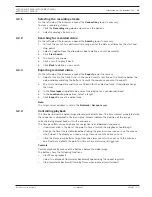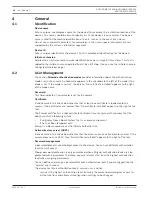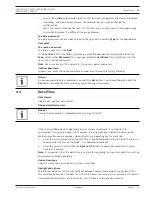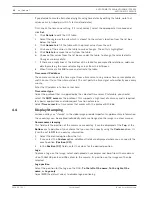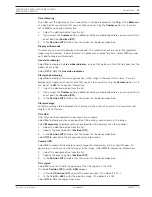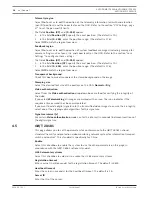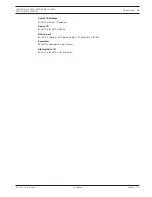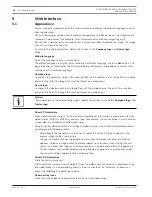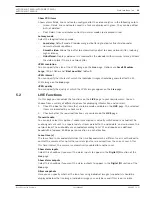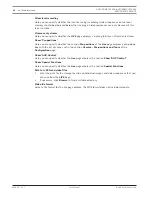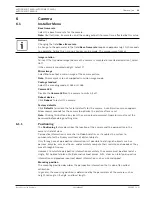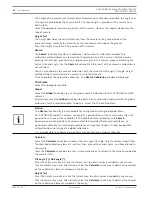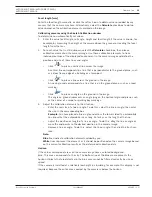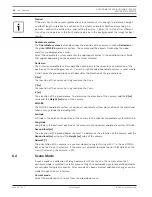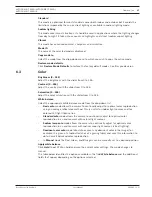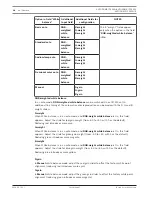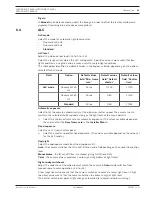
14
en | General
AUTODOME IP 4000i/AUTODOME IP 5000i/
AUTODOME IP 5000i IR
2018.05 | 1.1 |
User Manual
Bosch Security Systems
4
General
4.1
Identification
Device name
Enter a unique, unambiguous name for the device (for example, the installation location of the
device). This name should be easy to identify in a list of devices in your system. The device
name is used for the remote identification of a unit, such as in the event of an alarm.
Do not use any special characters, for example
&
, in the name. Special characters are not
supported by the system's internal management.
Device ID
Enter a unique identifier for the device. This ID is additional identification for the device.
Initiator extension
Add text to an initiator name to make identification easier in large iSCSI systems. This text is
added to the initiator name, separated from it by a full stop. (You can see the initiator name in
the System Overview page.)
4.2
User Management
The section
Allowed authentication modes
provides information about the authentication
modes set in the camera. A checkmark appears in the checkbox to the left of the mode if the
mode is set. If the mode is not set, the phrase, “No certificate installed” appears to the right
of the mode name.
Password
This field indicates if a password is set for the camera.
Certificate
A check mark in this check box indicates that at least one certificate is loaded onto the
camera. If no certificates are loaded, then “No certificate installed” appears to the right of the
text.
The Escrypt certificate is a root certificate for Bosch Security Systems that proves that the
device meets the following criteria:
–
It originates from a Bosch factory that is a secure environment.
–
It has not been tampered with.
Escrypt is a Bosch company and Certificate Authority (CA).
Active directory server (ADFS)
A check mark in this check box indicates that the camera uses an active directory server. If the
camera does not use ADFS, then “No certificate installed” appears to the right of the text.
Password management
A password prevents unauthorized access to the device. You can use different authorization
levels to limit access.
Proper password protection is only guaranteed when all higher authorization levels are also
protected with a password. Therefore, you must always start from the highest authorization
level when assigning passwords.
You can define and change a password for each authorization level if you are logged into the
“service” user account.
The device has three authorization levels: service, user, and live.
–
service is the highest authorization level. Entering the correct password gives access to
all the functions and allows all configuration settings to be changed.



